Have you ever been intrigued by the gentle and alluring nature of Ragdoll cats? From their inception in the 1960s, these unique cats have sparked fascination and myths. What's behind their calm demeanor? How did they gain such fame?
In Riverside, California, their story began with a breeder named Ann Baker and a cat named Josephine. But what happened next?
In this article, we will dig into the captivating history of Ragdoll cats, shedding light on their development, physical characteristics, and the legends that surround them.
We'll also explore the real reason behind their calm nature and the unconventional methods that shaped this breed. Get ready to discover what truly makes them stand out among other cat breeds.
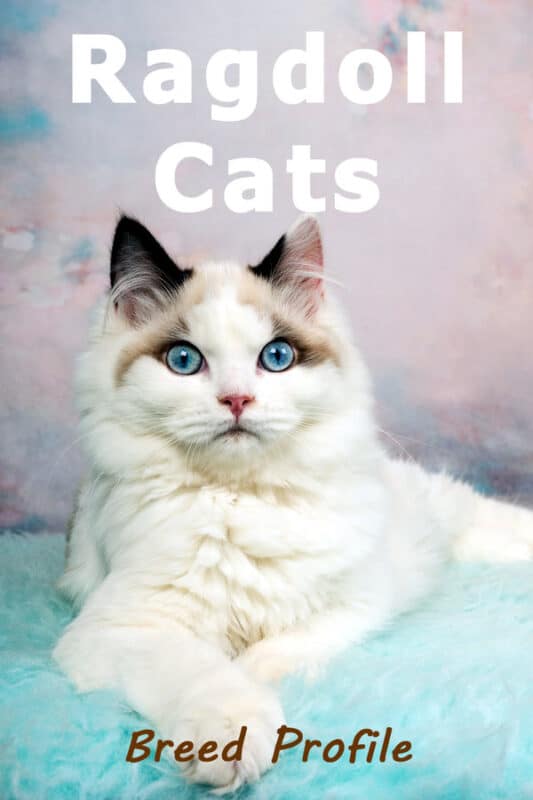
Ragdoll Cats: Breed History
Ragdoll cats have fascinated cat enthusiasts since their inception in the 1960s. Within a relatively short span of time, they've become synonymous with mystery, myth, and allure. How did these myths form, and what is the truth behind the calm nature of this breed?
The Birth of the Ragdoll Cat
The breed was developed in Riverside, California, by breeder Ann Baker. Interestingly, the original cats of the Ragdoll breed were regular, non-pedigreed, and what Baker described as "alley cats."
Josephine, a white domestic longhaired cat, not belonging to any particular breed, produced several litters of typical cats. She later produced kittens with a docile temperament, affectionate nature, and a tendency to go limp and relaxed when picked up.
The Mystery of Josephine
Ann Baker used to narrate an extraordinary tale about the Ragdoll's origins. She claimed that the docile nature of the breed was the result of a car accident. Josephine, the foundational cat, suffered a broken pelvis in that accident. According to Baker, this injury somehow transformed her genetics, causing all her offspring to be unusually calm.
This explanation has caught the imagination of many but is clearly not grounded in scientific fact. So what's the real story?
The Real Reason Behind the Calm Nature
The more plausible explanation for the Ragdoll's calm demeanor lies in its lineage. The breeding program used relaxed breeds such as Persians and Birmans, and it's these genetics that likely shaped Ragdoll's personality.
This scientific reasoning may lack the allure of Baker's tale, but it gives us an understanding of why these cats behave the way they do.
Ann Baker's Unusual Approach to Breeding
Baker took an unconventional route in the breeding world. She trademarked the name "Ragdoll" and established her registry, the International Ragdoll Cat Association (IRCA), around 1971.
She imposed strict standards on anyone who wished to breed or sell under that name, and the Ragdolls were not allowed to be registered by other breed associations. The IRCA still exists today, though it's quite small.
Mainstream Recognition
In 1975, a group led by Denny and Laura Dayton broke ranks with the IRCA, aiming to gain mainstream recognition for the Ragdoll. Beginning with a breeding pair of IRCA cats, this group developed the Ragdoll standard now accepted by major cat registries like the CFA and FIFe.
Around the early 1960s, a breeding pair of Ragdolls was exported to the UK, followed by eight more cats to establish the breed there.
Ragdoll Cats: Breed Description
Understanding the Ragdoll breed requires exploring both their physical characteristics and their one-of-a-kind temperament. Here, we will delve into what makes Ragdolls stand out among other cat breeds, from their unique coat patterns to their playful and gentle nature.
Physical Characteristics of Ragdoll Cats
Ragdoll cats are known for their sturdy, muscular bodies, with fully-grown females weighing 8 to 15 pounds and males even larger at 12 to 20 pounds. It's one of the largest domesticated cat breeds, and they may take up to four years to reach their mature size.
With a bulky frame, broad chest, proportionate legs, bushy tail, and round tufted paws, their appearance commands attention. Their heads are broad with a flat top, and their deep blue eyes are large and round.
Ragdolls are semi-longhaired cats. That means the coat of the Ragdoll is long but not as long as a Persian cat's. It is soft and rabbit-like and does not tend to mat.
Their coats are silky, dense, and medium to long length. Their plush coat, mainly made of long guard hairs, results in reduced shedding, although shedding may increase in spring. Regular brushing, at least twice a week, is essential. Adults develop a distinct ruff around their necks and knickerbockers on their hind legs.
Ragdoll's Coat: A Symphony of Patterns and Colors
The Cat Fanciers Association currently recognizes four color patterns, all of them based on the basic colorpoint pattern:
1. Colorpoint Ragdoll Coat Pattern
In this version, the cat presents the standard colorpoint pattern as seen in other breeds (most famously the Siamese). The body is light-colored with darker shades on the extremities: tail, paws, and face.
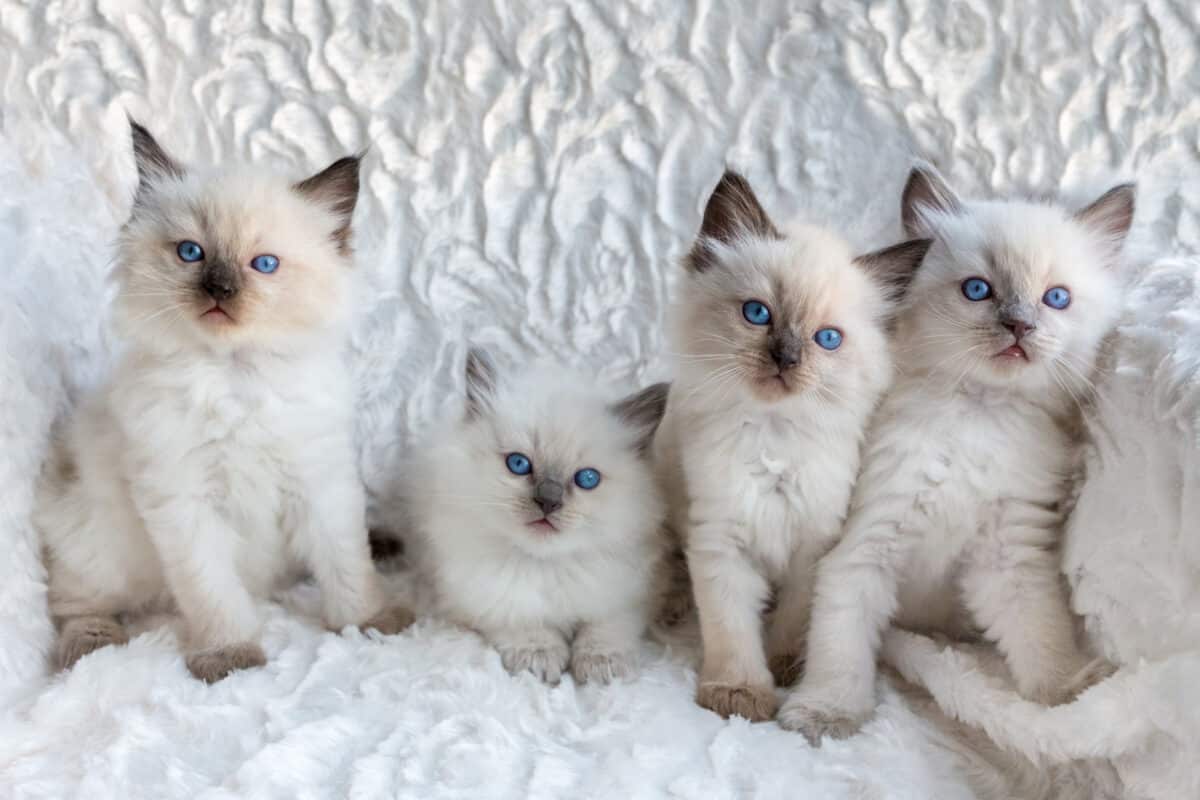
2. Mitted Ragdoll Coat Pattern
Similar to the colorpoint, but with added white "mittens" on the cat's front paws and a white streak along the chest and abdomen. The cat's chin is white and a couple of small white patches on the face are acceptable.
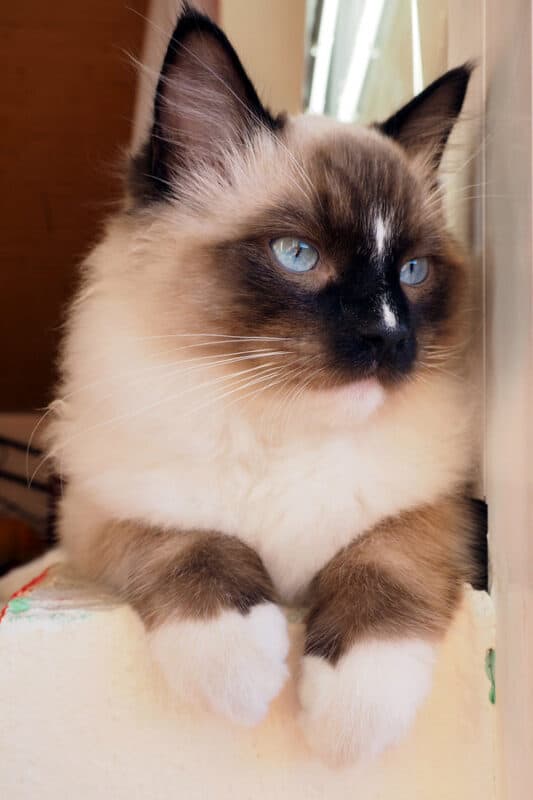
SIGN UP FOR THECATSITE'S EMAIL UPDATES >
3. Bi-color Ragdoll Coat Pattern
The lower part of the body is white, while the upper part maintains the colorpoint pattern. On the cat's face, there is a large inverted V-shaped white patch.
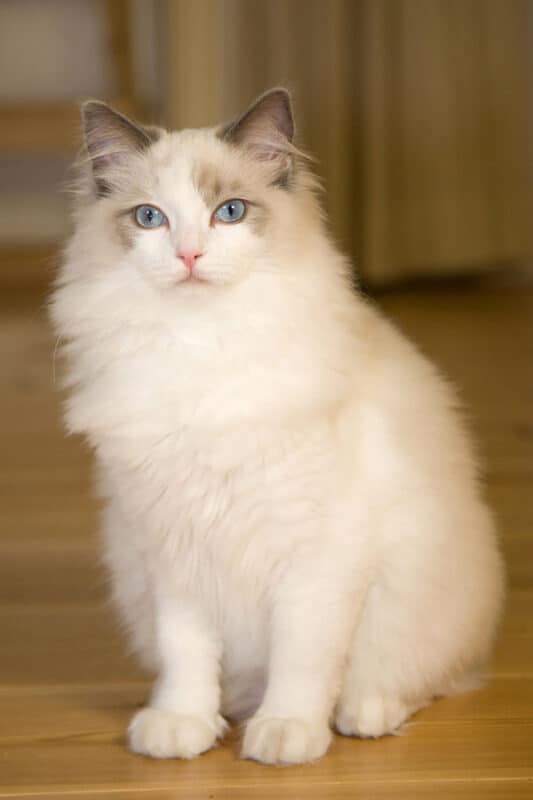
4. Van Ragdoll coat pattern
The colored pattern is limited to no more than 20% of the cat's body and restricted to ears, tail, and facial mask.

Ragdolls come in six main colors: seal, chocolate, red, blue, lilac, and cream, including lynx and tortoiseshell variations. Kittens are born white, and full color and coat develop by 3–4 years.
Temperament: The Puppy Cat of the Cat World
Often referred to as 'puppy cats' or 'dog-like cats,' Ragdolls are celebrated for their placid nature. Their affectionate behavior makes them follow owners around the house and seek physical affection, much like certain dog breeds.
Ann Baker claimed that Ragdolls do not feel pain, but modern breeders say that this is not so.
Playful even in their senior years, they enjoy retrieving toys and can be trained to do so. Unlike many breeds, they prefer staying low to the ground.
The Ragdoll's floppy and calm nature is perhaps inherited from Persian and Birman breeds. Some attribute it to genetic mutation or a mother's instinctive reaction. This has led to myths about Ragdolls being pain-resistant. Some British breeders have even sought to breed away from this trait, concerned it might not be in the cat's best interest.
Breed standard materials describe Ragdolls as affectionate, intelligent, relaxed, gentle, and ideal lap cats.
Caring for Ragdoll Cats: Understanding Their Special Needs
Ragdoll cats are known for their docile nature and luxurious coats. They're not just another pet; they're a member of the family, and caring for them means knowing their unique requirements.
Here's a comprehensive guide to understanding their special needs and how you can provide the best care for your Ragdoll cat.
Keep Them Indoors: A Protective Measure
Ragdoll cats are gentle creatures. They are so non-aggressive that they may lack the ability to defend themselves. Keeping them strictly as indoors-only cats ensures their safety and well-being.
Grooming Essentials for a Healthy Coat
Brushing the Ragdoll's Coat
Ragdoll cats have plush coat that doesn't require constant attention. Brushing it once every few days will keep it soft and shiny.
They have semi-long hair, and although thick, it stays relatively neat without matting. Regular grooming, at least once or twice a week, maintains the coat's luscious appearance.
Bathing and Other Grooming Needs
Ragdolls don't need frequent baths if you care for their coat properly. They shed, so additional tools for sweeping or vacuuming may be necessary. Trimming their nails prevents unwanted injuries and protects your furniture. Familiarize your Ragdoll with the nail clipper first to make the process smoother.
Most Ragdolls enjoy grooming and will let you know they appreciate it. Start grooming them young to acclimate them to the process by adulthood.
Engaging Your Ragdoll: Creating a Joyful Environment
Ragdoll cats are energetic and crave companionship. They thrive around human or animal friends, and loneliness can affect their mood.
Engage with them by talking, playing catch, and using interactive games. These activities stimulate their curiosity and strengthen your bond.
If kept indoors, Ragdolls can enjoy a fulfilling life of 15 to 20 years. Some sources suggest a slightly higher mortality rate compared to other breeds, making attentive care even more crucial.
Nurturing a Lifelong Friendship with Your Ragdoll Cat
Providing them with indoor safety, regular grooming, interactive play, and consistent companionship ensures a healthy and happy life. These loving creatures offer a joyous connection that lasts for years. Embrace the special relationship you share with your Ragdoll, and treasure the trust, love, and warmth that comes with it.
SIGN UP FOR THECATSITE'S EMAIL UPDATES >
Comments? Leave them using the form below. Questions? Please use the cat forums for those!
Note: We may get commissions for purchases made through links on this page.


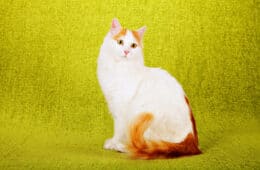

7 comments on “Ragdoll Cats [An In-Depth Look]”